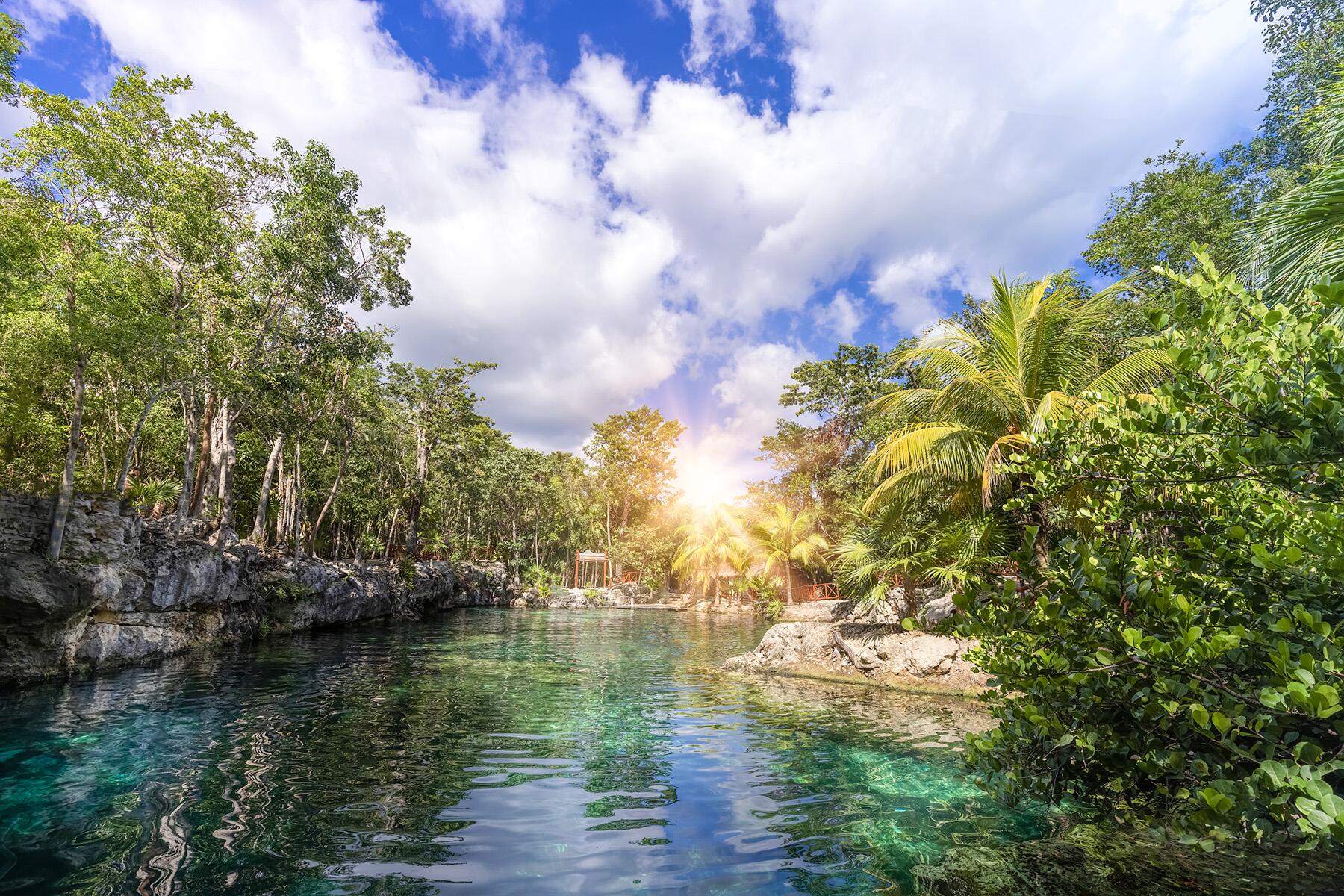Cenotes are a refreshing change from the typical Riviera Maya beach scene. Here are the most enchanting ones to visit.
One thing that’s certain about Riviera Maya is that there is no shortage of places to swim. Whether it’s rivers, certified Blue Flag beaches, dazzling rooftop pools, or cenotes, you’ll have a whale of a time in, on, and around the waters of this coastal region south of Cancún in the state of Quintana Roo.
Of these places to get some laps in, cenotes are the most enchanting. Formed by the collapse of bedrock, these natural pools are as clear as blanco tequila and treat swimmers to views of cathedral-like rock walls draped with vines and illuminated by sunlight beams. Derived from the Mayan word “dzonot” (meaning “water-filled cavity), these sinkholes are gateways to subterranean rivers and calcareous caves. The Maya believed them to be portals to the Xibalbá (the underworld), and worship, rituals, and harvest-invoking ceremonies were performed at cenotes (pronounced “seh-no-tays”), with an estimated 2,500 of them scattered around the Mexican Caribbean.
There are cave cenotes, semi-open cenotes, completely open cenotes that are akin to enormous swimming pools, and underground cenotes untouched by the sky that are best left for experienced divers. You’ll find them with stalagmites (from the floor) or stalactites (hanging from the ceiling), and some have ziplines or Tarzan swings for spirited jumps or simple wooden stairs for those preferring a more cautious entry. Some are free of charge to enter and swim in, while others have nominal fees that go towards maintenance and security. While cenotes are all remarkable in their own right, here are 10 to add to your must-visit list.





